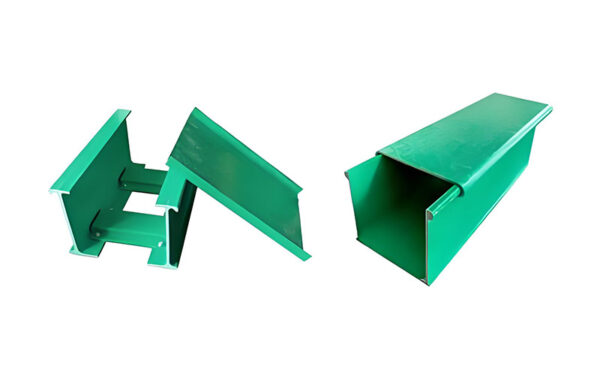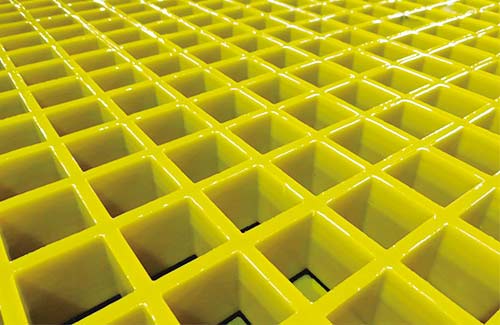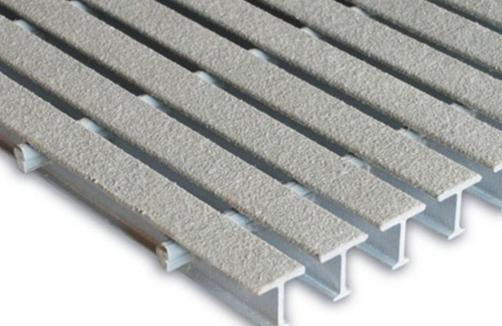Fiber Reinforced Polymer (FRP) tubes, also known as composite tubes, have become a game-changer in numerous industries due to their exceptional properties. These tubes are composed of a polymer matrix reinforced with high-strength fibers, such as glass, carbon, or aramid, which provide them with a unique combination of strength, durability, and flexibility. This article delves into the versatility of FRP tubes across various industries, highlighting their applications, benefits, and the transformative impact they have on modern engineering and construction.
Understanding FRP Tubes
FRP tubes are engineered materials that offer a high strength-to-weight ratio, excellent corrosion resistance, and the ability to withstand harsh environmental conditions. The polymer matrix, typically made from thermosetting resins like epoxy, polyester, or vinyl ester, binds the reinforcing fibers together, creating a robust and durable structure. The choice of fiber and matrix can be tailored to meet specific performance requirements, making FRP tubes highly adaptable for a wide range of applications.
Applications in Construction and Infrastructure
In the construction and infrastructure sector, FRP tubes have found extensive use due to their lightweight nature and superior mechanical properties. Some key applications include:
– Bridges and Overpasses: FRP tubes are used to construct bridge decks, girders, and columns, providing a lightweight and corrosion-resistant alternative to traditional materials. They are also ideal for bridge rehabilitation, where they can replace deteriorated steel or concrete components.
– Tunnels and Culverts: In tunneling and culvert construction, FRP tubes serve as liners and structural supports. Their resistance to water, chemicals, and soil pressures makes them well-suited for underground applications.
– Water and Wastewater Systems: FRP tubes are widely used in the construction of pipelines, storage tanks, and other water management structures. Their non-corrosive nature ensures long-term reliability and minimal maintenance, which is crucial for water and wastewater systems.
– Marine Structures: Due to their excellent resistance to saltwater and marine organisms, FRP tubes are used in the construction of piers, docks, and offshore platforms. They provide a robust and long-lasting alternative to traditional materials like wood and steel.
– Highway and Railway Infrastructure: In transportation infrastructure, FRP tubes are used for guardrails, signposts, and even as reinforcement in concrete structures. Their ability to withstand impact and weathering makes them a reliable choice.
Applications in Energy and Utilities
The energy and utilities sector has also embraced FRP tubes for their unique properties. Key applications include:
– Oil and Gas Industry: FRP tubes are used in the oil and gas industry for pipeline construction, particularly in corrosive environments. They are resistant to chemicals, hydrocarbons, and saltwater, making them suitable for both onshore and offshore operations.
– Renewable Energy: In the renewable energy sector, FRP tubes are used in wind turbine blades and solar panel support structures. Their lightweight and high-strength characteristics make them ideal for these applications, where reducing weight and increasing efficiency are critical.
– Power Transmission and Distribution: FRP tubes are used as insulators and support structures for power transmission lines. Their electrical insulating properties and resistance to weathering ensure reliable and safe operation over long periods.
Applications in Manufacturing and Industrial Processes
FRP tubes have also found a place in manufacturing and industrial processes, where they offer several advantages:
– Chemical Processing Plants: In chemical processing plants, FRP tubes are used for piping and storage tanks. Their resistance to a wide range of chemicals, including acids and bases, makes them an excellent choice for handling corrosive substances.
– Food and Beverage Industry: FRP tubes are used in the food and beverage industry for process piping, storage tanks, and equipment. Their non-reactive nature and ease of cleaning make them suitable for hygienic applications.
– Pharmaceuticals and Biotechnology: In pharmaceutical and biotechnology facilities, FRP tubes are used for cleanroom applications, where contamination control is paramount. Their smooth surfaces and chemical resistance ensure a sterile environment.
Applications in Transportation
The transportation sector benefits from the lightweight and durable nature of FRP tubes, leading to more efficient and sustainable vehicles:
– Automotive Industry: In the automotive industry, FRP tubes are used for structural components, such as chassis and body panels. Their lightweight nature helps reduce vehicle weight, improving fuel efficiency and overall performance.
– Aerospace Industry: In the aerospace industry, FRP tubes are used in aircraft and spacecraft for structural components, such as wings, fuselages, and landing gear. Their high strength-to-weight ratio and resistance to fatigue make them ideal for these applications.
– Railway Industry: In the railway industry, FRP tubes are used for train car bodies, interior components, and trackside structures. Their durability and low maintenance requirements contribute to the longevity and reliability of rail systems.
Applications in Environmental and Agricultural Sectors
FRP tubes are also making a significant impact in the environmental and agricultural sectors, where sustainability and durability are key considerations:
– Water Treatment and Desalination: In water treatment and desalination plants, FRP tubes are used for filtration systems, pressure vessels, and pipelines. Their resistance to corrosion and chemicals ensures long-term reliability and cost-effectiveness.
– Agricultural Irrigation: In agricultural irrigation systems, FRP tubes are used for water distribution and drainage. Their durability and resistance to soil and waterborne contaminants make them a reliable choice for long-term use.
– Landfill and Waste Management: In landfill and waste management, FRP tubes are used for leachate collection and gas extraction systems. Their resistance to aggressive chemicals and gases ensures the safe and efficient management of waste.
Advantages of Using FRP Tubes
The widespread adoption of FRP tubes across various industries is driven by several key advantages:
– Durability and Longevity: FRP tubes are highly resistant to corrosion, UV radiation, and chemical exposure, ensuring a longer service life compared to traditional materials. This reduces the need for frequent repairs and replacements, leading to significant cost savings over time.
– Lightweight and High Strength: The high strength-to-weight ratio of FRP tubes allows for the creation of structures that are both strong and lightweight. This not only simplifies installation but also reduces the load on supporting structures, enabling more efficient designs.
– Design Flexibility: FRP tubes can be easily molded into complex shapes and sizes, providing architects and engineers with greater design freedom. This flexibility allows for the creation of innovative and aesthetically pleasing structures.
– Cost-Effectiveness: While the initial cost of FRP tubes may be higher than some traditional materials, their long-term benefits, such as reduced maintenance and extended lifespan, make them a cost-effective solution. Additionally, the ease of installation and lower transportation costs contribute to overall project savings.
– Sustainability: FRP tubes have a lower environmental impact compared to materials like steel and concrete. They require less energy to produce and transport, and their longevity reduces the need for frequent replacements, thereby minimizing waste and resource consumption.
Case Studies: Successful Implementation of FRP Tubes
To illustrate the practical benefits of FRP tubes, let’s look at a few case studies:
– Bridge Rehabilitation in New York City: A major bridge in New York City was rehabilitated using FRP tubes for the replacement of corroded steel beams. The FRP tubes provided a lightweight, durable, and corrosion-resistant solution, significantly extending the bridge’s service life and reducing maintenance costs.
– Wastewater Treatment Plant in California: A wastewater treatment plant in California upgraded its pipeline system with FRP tubes, replacing old, corroded pipes. The new FRP pipes offered superior resistance to chemicals and corrosion, resulting in improved operational efficiency and reduced downtime.
– Offshore Platform in the North Sea: An offshore platform in the North Sea was constructed using FRP tubes for the support structure. The tubes’ resistance to saltwater and marine growth, combined with their lightweight and high-strength properties, ensured a robust and long-lasting platform, capable of withstanding harsh marine conditions.
– Wind Turbine Blades in Texas: A wind farm in Texas utilized FRP tubes for the construction of wind turbine blades. The lightweight and high-strength properties of the FRP tubes allowed for larger and more efficient blades, increasing the energy output of the turbines.
Challenges and Considerations
While FRP tubes offer numerous advantages, there are also challenges and considerations to keep in mind:
– Initial Cost: The upfront cost of FRP tubes can be higher than traditional materials, which may be a barrier for some projects. However, the long-term benefits often outweigh the initial investment.
– Fire Resistance: Although FRP tubes are generally fire-resistant, their performance in extreme fire conditions may vary. It is essential to select the appropriate type of FRP and apply additional fireproofing measures if necessary.
– Regulatory Compliance: The use of FRP tubes in various industries must comply with local building codes and standards. Engineers and designers should ensure that the selected FRP products meet all regulatory requirements.
– Installation and Handling: Proper handling and installation techniques are crucial to maximize the performance of FRP tubes. Training and experience in working with composites are essential to avoid damage during installation.
Future Trends and Innovations
As technology advances, the role of FRP tubes in various industries is likely to expand. Some emerging trends and innovations include:
– Smart Infrastructure: The integration of sensors and monitoring systems into FRP tubes can enable real-time monitoring of structural health, allowing for proactive maintenance and increased safety.
– Nanotechnology: The use of nanomaterials in FRP composites can enhance their mechanical and thermal properties, leading to even stronger and more durable tubes.
– Sustainable Manufacturing: Advances in manufacturing processes, such as the use of recycled materials and renewable energy sources, are making FRP tubes more environmentally friendly.
– Hybrid Composites: Combining different types of fibers and matrices to create hybrid FRP composites can result in materials with tailored properties, suitable for specific applications.
Conclusion
Fiber Reinforced Polymer (FRP) tubes are revolutionizing the way we build and maintain infrastructure across various industries. Their unique combination of strength, durability, and flexibility makes them an indispensable component in a wide range of applications, from bridges and tunnels to renewable energy and transportation. As the demand for sustainable and high-performance materials continues to grow, FRP tubes are poised to play an increasingly important role in shaping the future of our built environment. By embracing these innovative solutions, we can build more resilient, efficient, and environmentally friendly infrastructure for generations to come.







